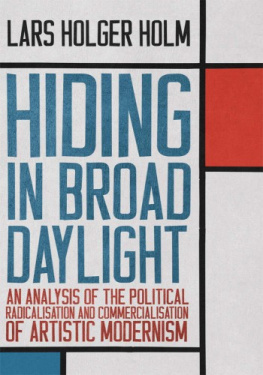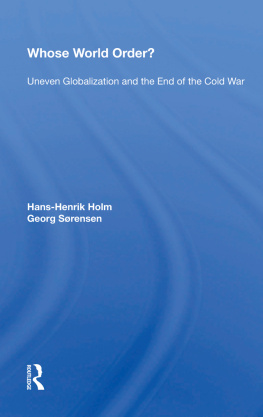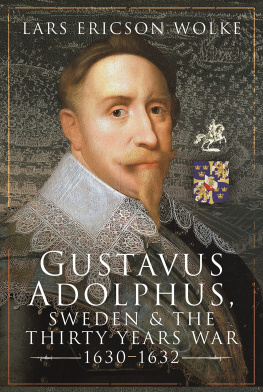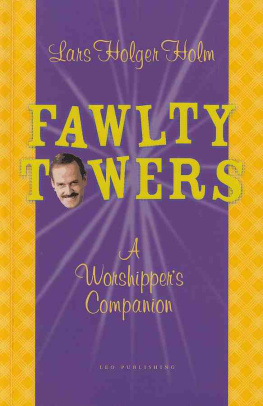Hiding in Broad Daylight
Copyright 2015 by Arktos Media Ltd.
All rights reserved. No part of this book may be reproduced or utilised in any form or by any means (whether electronic or mechanical), including photocopying, recording or by any information storage and retrieval system, without permission in writing from the publisher.
BIC CLASSIFICATION
History of art and design styles: from c. 1900 (ACX)
Ethnic minorities and multicultural studies (JFSL1)
EDITOR
John B Morgan
LAYOUT
Tor Westman
COVER DESIGN
Andreas Nilsson
ARKTOS MEDIA LTD.
www.arktos.com
LARS HOLGER HOLM
Hiding in Broad Daylight
An Analysis of the Political Radicalisation and Commercialisation of Artistic Modernism
Arktos
A dancing leaf in the Mistral,
A small bird against the wind,
The cemetery with its ancient Cyprus trees,
There is nothing and everything to be said:
The sky has no limit.
I
The Latin word modernus made its first known appearance in writing during the fifth century AD. At this time the antique European civilisation was past its heyday. Its final political embodiment, the Roman Empire, had been overrun several times by barbarians of different races. In fact, the whole Italian peninsula, heartland of the old western empire, was about to be subjected to Theodoric, king of the Goths.
In southern Europe the venerable pantheon of pagan gods had been irrevocably supplanted by the Christian doctrine. But although fifth century Europe saw Christianity conquer the souls en masse , the question as to whether modernus is in this context a significant byword for an important change taking place in the collective conscience, I shall at present leave aside. Essential to my purpose here is to underline that modernus , together with a later word modernitas, which made its first attested appearance at a church meeting initiated by Pope Gregory VII in 1075 thus in the momentous era between the Battle of Hastings and the First Crusade are both derived from the Latin adverb modo , interpreted as right now, or in a particular manner. The medieval text in question speaks of a modernitas nostra : our modernity.
But something fateful must have happened to modernitas nostra on the road to Antioch, since we must take a long leap in history before the word resurfaces in western culture, this time in the literary world of nineteenth century Paris. Here, on the other hand, there is little doubt as to its general significance: Modern is an attribute of Parisian life after lancien rgime and the revolution. In the wake of Napoleon, during the course of the entire nineteenth century, some major national cities London, Paris, New York began their ascent as international metropolitan areas, representing not only the esprit of their respective nations but the entire world in summation. The word modern, apart from being a temporal notion, consequently has a flair of relentless urbanism and budding globalisation. Honor de Balzac, who often used it, should have known, since he had once been one of many hopeful young men moving from the countryside to Paris in search of the blessings of modern civilisation, of wealth, fame, and glory.
To Charles Baudelaire, his Parisian contemporary, the word modern was closely associated with la mode fashion. In his essay The Painter of Modern Life he embraces modernity as the living and fugitive aspect of art, the assimilated zeitgeist, as it were, without which the eternal truth and beauty of a work of art cannot be appreciated. Philosophically speaking, he proceeds from a premise that attempts to reconcile the old scholastic debate on whether generalised concepts, such as man or dog, are realities ante or post rem . These two predominant positions in the medieval philosophical discourse were in turn regarded as extrapolations of originally Platonic and Aristotelian concepts. In his essay On the History of Religion and Philosophy in Germany , Heinrich Heine writes:
Plato and Aristotle! These are not merely two systems: they are also types of two distinct human natures, which from time immemorial, under every sort of disguise, stand more or less inimically opposed. The whole medieval period in particular was riven by this conflict, which persists down to the present day, and which forms the most essential content of the history of the Christian Church. Although under other names, it is always of Plato and Aristotle that we speak. Visionary, mystical, Platonic natures disclose Christian ideas and their corresponding symbols from the fathomless depths of their souls. Practical, orderly, Aristotelian natures build out of these ideas and symbols a fixed system, a dogma and a cult. Finally, the Church eventually embraces both naturesone of them entrenched in the clergy, and the other in monasticism; but both keeping up a constant feud.
The Platonic position as regards the essence of reality is that notions of beauty and truth, for example, are reflections of pure ideas or archetypes in the vernacular of Carl Gustav Jung, who used this quote from Heine as a motto for his own study Psychological Types . Our capacity to appreciate beauty in a work of art stands in direct relation to our capacity to perceive immaterial ideas, which we have received in all their glory before we were even born. The shudder that beauty produces in us is therefore a reminiscence from our own spiritual existence prior to physical birth.
Inversely Aristotelian in the Middle Ages also called nominalist interpretations of the nature of things underscores the living concreteness of all species and tend to group common traits in objects as abstractions of individuals into species, again subsumed in genera . Beauty for example harmony of proportion can be inherent in a specific object. From the observation of many such beautiful objects we arrive at an abstraction, a sort of heading, that we call beauty per se . Even so, beauty is not a static idea; it is a living phenomenon, linked to specific beings and objects living and moving through time and space. Which is why Baudelaire, without denying the Platonic, idealistic, tradition its place within aesthetics, emphasises that without the touch of time, without the fashion and general atmosphere of a specific era, the more timeless qualities of a work of art cannot be spiritually digested.
Here, as elsewhere in all nineteenth century debate on modern art, the interplay between past and present is still implicit. It is, however, very important for the purpose of explaining what has subsequently become known as modernism and post-modernism in art to understand the modernist breakthrough as a political upheaval, not only against bourgeois society in general, but, insofar as that same society was influenced by a cultural hierarchy descending from the European aristocracy, against any idealist notion propagating the idea of intrinsic beauty or artistic quality. When Baudelaire chooses to speak about a painter of modern life, he does so by deliberately taking as his subject matter an artist that in his day was primarily considered a sketching war correspondent as well as an habitu of so-called lieus-de-perditions rather than a first-rate independent artist in his own right: Constantin Guys. In naming him the painter of modern life, Baudelaire wishes to pay homage to an artist capable of rendering the action and fugitiveness of real life, in this manner heralding the subsequent impressionist school by relegating the Academy to the rather ungrateful task of keeping the dead on perpetual lit de parade .
Speaking of la mode , there has of course in all civilised societies been a modernity in terms of fashion. We must assume that the noble women of Alexandria or Rome found countless ways of distinguishing themselves from the plebs by quickly adopting different fashions only to drop them when they became too popular. An Icelandic saga records the final moments of a hero, observing the weapon that has just lethally entered his chest while uttering: I see that the broad-headed spears have become fashionable again. There was obviously modernity in a new method of storing grains or preserving wine. There was one modernity in warfare, another in how to properly train a horse. There was the exoticism of new products, new tastes, new fragrances. But regardless of the novelty brought to bear on a people of the past, modernity, or its equivalent, was never felt as an intrusion radically splitting the world into a hopelessly bygone yesterday and a just as fervently anticipated tomorrow. This feverish expectation of a morrow in the making is something characteristic of our time only: the modern era par excellence .
Next page











